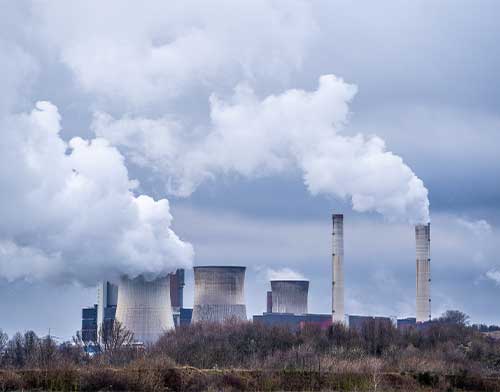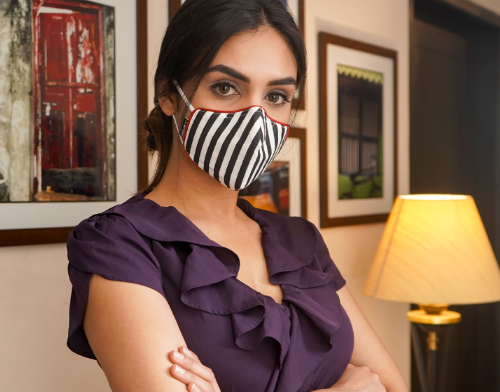The WHO in its statement announced Air Pollution to be a Public Health Emergency because of the magnitude of damage it’s causing to people around the world where 90% of the world population in breathing unsafe air. One of the key components of air pollution is Particulate Matter (PM) which is not visible to the naked eye and is inhalable. You might have heard a lot about PM 2.5, PM10, etc., but have you ever wondered what is PM 2.5 and PM 10 actually? Don’t worry, this quick blog answers all your queries about PM 10 and PM 2.5 particles.
What Is PM 2.5 and PM 10 Particulate Matter?
Particulate matter are usually PM 10 and PM 2.5. PM is an umbrella term used for airborne particles, where PM 2.5 and PM 10 are what we most commonly hear. The number to the right of PM indicates the aerodynamic diameter of the particles. Here, PM 10 and PM2.5 depicts the size of particulate matter. Therefore, PM10 refers to particles with an aerodynamic diameter smaller than 10 μm, and PM2.5 refers to particles with an aerodynamic diameter smaller than 2.5 μm.
PM 10 and PM 2.5 may be either directly emitted from sources (primary particles) or formed in the atmosphere through chemical reactions of gases (secondary particles) such as sulphur dioxide (SO2), nitrogen oxides (NOX), and certain organic compounds. These organic compounds can be emitted by both natural or from man-made sources such as heavy manufacturing, combustion, construction sites, roadways, fires and other industrial activities.
Harmful Effects of PM2.5 & PM10
Both PM2.5 and PM10 can be inhaled, with some depositing throughout the airways, though the locations of particle deposition in the lung depend on particle size. PM2.5 is more likely to travel into and deposit on the surface of the deeper parts of the lung, while PM10 is more likely to deposit on the surfaces of the larger airways of the upper region of the lung.
Exposure to both PM 2.5 and PM10 can result in premature mortality, increased chances of hospital admissions for heart and lungs, reduced immune response, congenital disabilities, diabetes, reduced brain white matter, acute to chronic bronchitis, asthma attacks, respiratory discomfort, fatigue, etc.
The American Heart Association also warns about the effect of PM2.5 on Heart’s health and mortality rate and states “Exposure to PM <2.5 μm in diameter (PM2.5) over a few hours to weeks can trigger cardiovascular disease-related mortality and nonfatal events; longer-term exposure (eg, a few years) increases the risk for cardiovascular mortality to an even greater extent than exposures over a few days and reduces life expectancy within more highly exposed segments of the population by several months to a few years.”
Who is at Greatest Risk With Exposure to PM2.5 and PM10?
Children are always most susceptible as they inhale more air per pound of body weight than adults, as they breathe faster, tend to spend more time outdoors and have smaller bodies. Their developing immunity systems may also be compromised in the process. In addition to this, the older adults with underlying conditions or pre-existing heart or lung diseases are at great risk when exposed to high levels of PM 2.5 & PM10.
Monitoring Air Pollution
Government Agencies measure the air pollution level through the Air Quality Index (AQI) using an air monitor and an air pollutant concentration over a specified period of time, the results are then grouped into ranges, each having its descriptor, a colour code and a standard public health advisory to follow. The higher the AQI, the larger will be the percentage of the pullulation to experience severe adverse health effects caused by PM 10 and PM 2.5. The primary driver of AQI in India is the season, where in summers, it is driven by PM 10 and in winters it is driven by PM 2.5.
Conclusion
The onset of winter season in India brings the pollution season – largely divided into 2 episodes. Episode 1 which runs from Oct 15 to Nov 15 largely driven by paddy burning and NW winds that carry the emissions from Lahore to Kolkata and Episode 2 from December 15 to January 15, driven by biomass burning and cold air inversion, once severe cold conditions set in.
Now that we have learned about what is pm2.5 and pm10, we must immediately act to curb the potential ill effects caused by them. The problem is so severe that utmost protection is now a necessity. N95 masks with nanofiber filters, that filter down to 0.1 microns that are essential.
Nirvana Being, a premier Clean Air Solutions business in India offers an array of products that protect you everywhere you go- both indoor and outdoor, including specialized masks tested by Nelson Labs, USA and air purification and monitoring solutions for homes, cars and centrally conditioned buildings to make clean air more accessible. Combating both PM 2.5 and PM 10 particulate matter, you must grab these highly efficient masks from Nirvana Being today.













